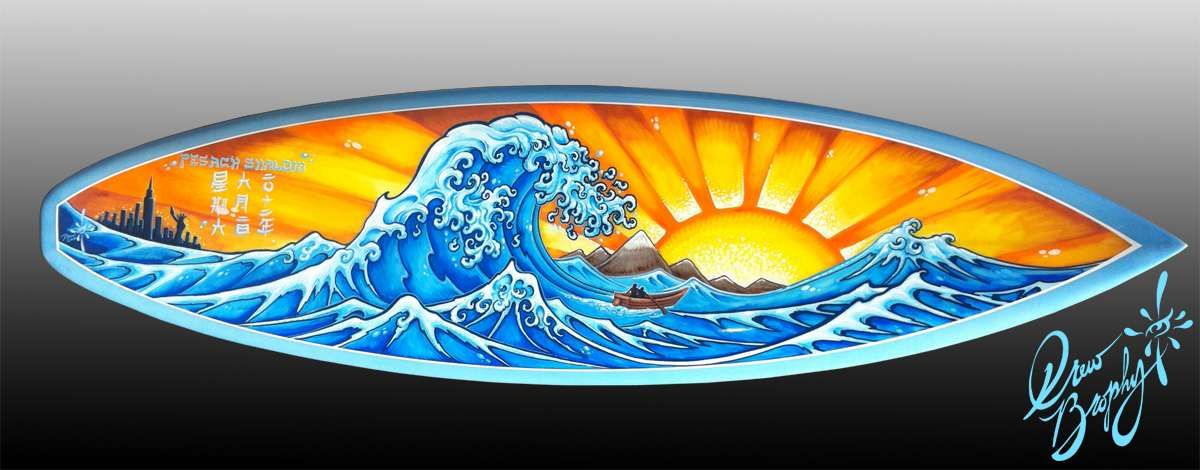The more your name is seen on your art, the more you will be remembered as an artist, the more the phone will ring, the more people will visit your website.
Two questions I get from artists on a regular basis:
“Should I sign my name to my artwork?”
And,
“My art is being printed on merchandise. Should I require my client to make my signature legible?”
If you want to be known for your artwork, and you want to gain collectors and clients, the answer is:
YES and YES!
Some artists do not sign their work. And they are making a huge mistake! Without a signature, your new fans can’t find you, and there is no way to verify who created the art.
It’s so frustrating to me when I fall in love with a piece of art, and I want to look up the artist, and I can’t find their name on it.
Plan beyond today and next week. Plan for twenty years from now. Do you want your art to be remembered? Do you want it to be recognizable? Do you want your fans to be able to know if a piece of art is authentically yours?
Signing his name helped Drew Brophy become the best known artist in his niche of surf. Here’s how:
After Drew has put the final touch on a piece of art, he signs it. His signature indicates that the painting is finished. His signature announces to the world that it is an original, Drew Brophy art piece. This is important, because he has many copycats out there. His signature authenticates the art as his own.
Over twenty years ago Drew was painting surfboards for a living. He painted thousands of surfboards that were shipped all over the world. He signed his name to every single one. He was the first production surfboard artist to ever sign his name!
When companies started commissioning Drew to create art for t-shirts, posters and beach gear, he insisted that his name and signature be clearly printed on every item.
This one little detail contributed to his lifetime success as an artist. Over time, in the surf world, he became the best known artist in that niche. People knew his name, because, well, it was on everything!
Are there ever exceptions to this rule? Yes, below are a few reasons that it would NOT make sense to put your name on your artwork:
- If you are a fine abstract artist and a signature would not work on the front of the painting – then sign the back. But add your signature or logo or some sort of copyright notice to the digital images (in a subtle way) when posting online, so that people who share your image will also share who the artist is.
- If you are an illustrator who works anonymously behind the scenes, and you sell all copyrights to your client. (You no longer have ownership or rights to the artwork.)
- If you are creating art for a graphic business logo (the client would own all copyrights to the logo)
- If you do not want to be known for your artwork. (Some artists choose this business model)
- If you are creating art different from the style you are known for, and you do not want your name to be associated with the artwork. (Example: I know a fine artist who painted a line of work under another name to sell in a market different than what he’s known for. This was strictly for financial gain, not to grow his own following.)
Here are a few tips to get the most out of your signature:
- Sign every piece of work with your name when it’s finished (if you can’t sign the front for aesthetic reasons, sign the back)
- Have a consistent signature. Sign it the same way every time. This little detail is important.
- Write the date on your art – some artists date it on the front, some write it on the back. It’s your choice, and the best way depends on the type of art you create. Just make sure it has a date on it! Years from now you will thank me for this.
- When providing digital copies of your artwork for online use (Facebook, Blog Posts, etc.), add either a copyright notice on the front of it (i.e. Artwork © Drew Brophy) and/or add your digital logo or signature, if your signature is not clearly legible. This way, when people share your art online, your name is clearly on it. (See example photo in the blog post – Drew’s signature and logo is on the image so when people “borrow” the image, his name is there.)
- If you license your art, or create for commercial use, consider creating a logo/signature that can be consistently used as part of your branding (like Drew’s signature/logo in the painting above.)
For more on this topic, read the article by ArtBusiness.com titled SIGN YOUR ART SO PEOPLE CAN READ IT.
Do you sign your artwork? And have you always signed it? If you don’t sign it, why not? Please share in the comments below!
Thanks for reading,
Maria xxoo















